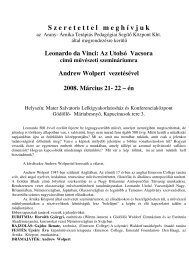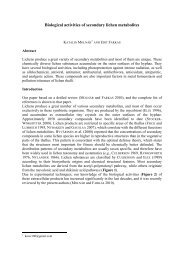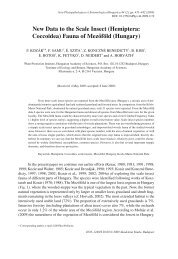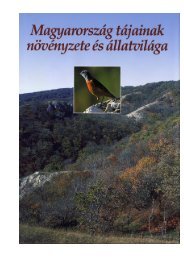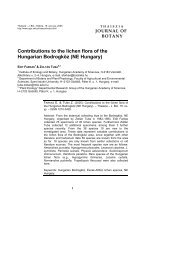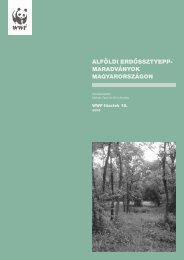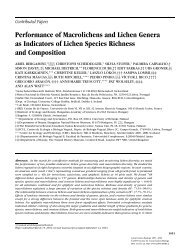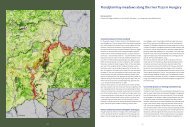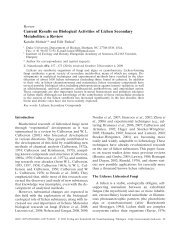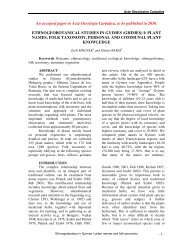Untitled
Untitled
Untitled
You also want an ePaper? Increase the reach of your titles
YUMPU automatically turns print PDFs into web optimized ePapers that Google loves.
torkodás nélkül. A legelők megfelelő természetvédelmi<br />
kezeléséhez a hagyományos elveket ismerő és követő,<br />
de a természetvédelmi célokat is értő pásztorokra lenne<br />
szükség (Kis, 2011a, b). Ehhez újra kellene éleszteni<br />
a pásztorképzést, növelni a pásztorok becsületét, erősíteni<br />
a pásztorbüszkeséget (Gencsi Zoltán, a Hortobágyi<br />
Génmegőrző Non-profit Kft. volt igazgatója sokat tett ez<br />
ügyben). Tudjuk, hogy nem könnyű feladat a bejáratott<br />
útról áttérni egy olyan útra, ahol a pásztor és jószága<br />
érdekét is komolyan figyelembe veszi a természetvédelmi<br />
kezelés, de enélkül a hortobágyi pásztorkultúra<br />
pusztulása tovább fog folyni, ezáltal egyre nehezebbé<br />
fog válni a természetvédelmi kezelés is.<br />
Ne feledjük, hogy a puszta mai alullegeltetettségének<br />
nem a pásztorok és nem is a nemzeti parkosok,<br />
agrármérnökök, hanem globálisabb folyamatok az<br />
okozói. Széles körű helyi összefogásra van szükség<br />
a helyzet javítása érdekében. Egy pásztor így fogalmazta<br />
meg a problémát: a nemzeti park meg akarja<br />
őrizni az ősi pusztai életet, de ezzel a szabályozással<br />
elpusztítja…<br />
A FEW THOUGHTS ON THE KNOWLEDGE<br />
OF HERDSMEN<br />
The amount of knowledge in the herding vocation in<br />
the Hortobágy (or in a broader sense, in the Great Hungarian<br />
Plain) is enormous, and even the part of it documented<br />
in books would fill shelves in a library (see Herman<br />
1914, Fazekas 1979, Barna 1979, etc.). Traditional<br />
herding, which looks back for thousands of years, has<br />
changed continuously (see Bellon 1996), and adapted<br />
to the extreme conditions of the saline puszta within<br />
the limits set by historical circumstances. Although people<br />
were not short of ideas over time to transform the<br />
puszta of the Hortobágy into a rich and fertile arable<br />
land (Molnár A. and Fintha 2005), the puszta has remained<br />
a land of pastures and grassland, where almost<br />
300 active herdsmen live even today, most of them<br />
practicing the nearly traditional, (not industrialized)<br />
methods of herding.<br />
The rules, customs and general knowledge for herding<br />
in the Hortobágy have been influenced by two sets<br />
of factors: (1) needs of the livestock and the opportunities<br />
offered by the puszta on the one hand, and (2) the<br />
marketing prospects and constraints as well as stipulations<br />
of stock owners, national parks, and the state<br />
(more recently the European Union), on the other<br />
hand. The differing histories of the settlements around<br />
the Hortobágy (Cumanian, Matyó, Haidu towns, the city<br />
132 133



